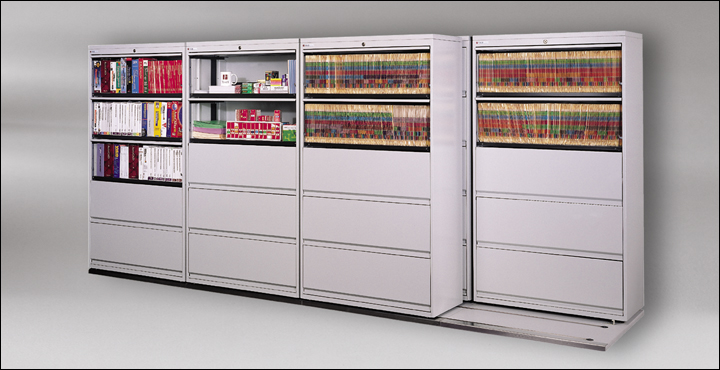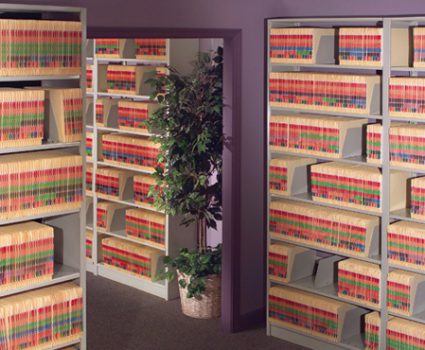
Choosing a mobile storage system: what are your options?
In our last blog post we covered five key questions to ask when considering a mobile shelving system.
As the post outlined, there are many factors to consider:
- the physical format of the records being stored
- the quantity of records, both now and in the future
- the amount of available space and how it is laid out
- how workers will access the information
- security and compliance requirements.
Understanding these important factors makes it much easier to choose the right type of mobile shelving solution.
This blog post picks up where we left off last week by outlining the key features to consider when picking out a mobile shelving solution.
Many choices in mobile storage
1. Do you actually need mobile?
To begin with, it’s worth asking whether you need mobile shelving at all. Fixed lateral shelving units allow you to store many more files per square foot of floor space than traditional filing cabinets.
Depending on your situation, you may find that upgrading to fixed lateral shelving offers plenty of additional storage for your needs. If not, then some kind of mobile shelving would likely be the best option.

2. Which mobile configuration: lateral or compact?
The next big choice to make is whether to go with a “lateral” or “compact” mobile shelving configuration.
With a lateral configuration, the cabinets are positioned with one row directly in front of the other. The front cabinet(s) can be rolled to either side in order to gain access to the shelves in the back row.
When to use them: Lateral configuration shelves are suitable for a lower volume of files and when space does not permit a compact configuration.

With a compact configuration, the cabinets slide on rails in a direction perpendicular to the shelves. As the entire row moves, new aisles open between the rows to provide access for workers.
When to use them: Compact configuration shelves are perfect for high-volume situations when you need to maximize the use of storage space.

3. Manual, mechanical or powered?
Another choice to make involves how the shelves will actually move. Which options are available to you depends on the shelving configuration and manufacturer.
Manual: Some mobile shelving units are purely manual, requiring the worker to slide the shelves directly. This is mainly seen with lateral configurations.
Mechanical: Most compact mobile shelving units offer a mechanical option to make it easier to move the shelves. This often takes the form of a wheel that moves the shelves to either side as it is turned.
Powered: Powered mobile shelving systems take advantage of an electric motor to move the shelves. This is most commonly seen in heavy-duty, high-density compact mobile shelving installations. End-of-row buttons allow users to control the motor and move the shelves to either side.

4. Security features
Every good mobile shelving solution will offer features and add-ons that allow you to address security and compliance requirements.
Locks are the most common security feature for mobile shelving systems. Locks fix the mobile shelves in place, preventing someone from opening an aisle or exposing a shelf.
Another popular security add-on is a rolling door, which can be installed to cover exposed shelf faces. Simply roll down the door and lock it in place to completely cover and secure your files.
Some mobile storage solutions include the option of a cage-like system. Cages can be used to close off a single aisle and to cut off access from the sides and from above.
Individual solutions will have other options for you to consider, but this list covers all the important choices.





